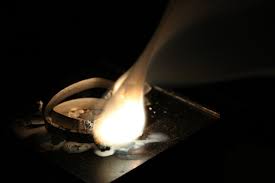How to determine Limiting Reactant?
The reagent which is finished earlier than other reactants in a reaction is called limiting reagent.
As soon as the limiting reagent finishes, the reaction stops and no more product forms.
Only one reactant can be limiting in a chemical reaction.
Always calculate the amount of product by using limiting reactant and not the excess reactant because to form the product you need all the reactants.
For example: 20 g Magnesium burns in 10 g of Oxygen to form Magnesium oxide. Determine the limiting reactant and calculate the mass of magnesium oxide formed in the reaction.

Firstly write the chemical equation for the above reaction.
Mg + O2 –> MgO
Balance the equation
2Mg +O2 –> 2MgO
Ar of Mg is 24 g/mol
Ar of O is 16 g/mol
Mr of MgO is 24+16=40 g/mol
48 g Mg needs Oxygen= 32 g
20 g Mg Needs Oxygen= x
x=( 20*32)/48
x= 13.3 g
so 13.3 g Oxygen is needed in the reaction but we only have 10 g oxygen in the reaction thus Oxygen is limiting reactant.
Now we need to calculate the mass of magnesium oxide formed so again we will use the balanced equation and only compare the limiting reactant to calculate the product as informed earlier.
32 g Oxygen forms MgO = 80 g
10 g Oxygen forms MgO = x = 80*10/32
x=25
Read moles
